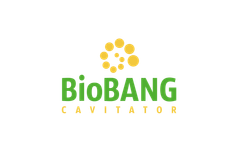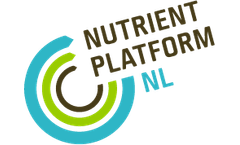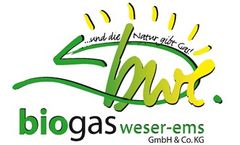Swine Manure Articles & Analysis
22 articles found
Lunen Location: Lunen, Germany Output: 2.4MW Electricity Input Materials: Maize Silage, cow and pig slurry. ...
A system of bag tank storage is putting a large-scale pig producer a step ahead of legislation that will require slurry stores to be covered by 2027. ...
Plant’s power: 500 kW/h Daily feeding: pig slurry; corn silage; rye meal Goal: Reduce the product’s viscosity into digesters to increase the concentration of Dry Matter To see video, please click ...
Plant’s power: 3000 kW/h Daily Feeding: whole Cereal silage, grass silage, OFMSW and pig slurry Goal: to improve the viscosity into digesters and to concentrate the DM % into digesters To see video, please click ...
Farm Renewables - Broadley Energy Broadley Energy, owned by Farm Renewables, installed a BioBANG to recirculate digestate to reduce the viscosity and generate more ...
Biophosphate pellets from pig manure for use in low-phosphate agricultural areas The Ecoson Biophosphate plant produces green gas from animal manure in a sustainable way, and a natural, phosphate-rich organic fertilizer pellet for use in low-phosphate agricultural areas. The plant has a processing capacity of 100,000 tonnes of manure per year. With this, approximately 6,000 tons of biophosphate ...
Manure represents an exquisite mining opportunity for nutrient recovery (nitrogen and phosphorus), and for their reuse as renewable fertilisers. The ManureEcoMine proposes an integrated approach of technologies, operated in a pilot-scale installation treating swine manure (83.7%) and Ecofrit® (16.3%), a mix of vegetable residues. ...
The aim of this study was to analyze the effect of the addition of rice straw and clay residuals on the prokaryote methane-producing community structure in a semi-continuously stirred tank reactor fed with swine manure. Molecular techniques, including terminal restriction fragment length polymorphism and a comparative nucleotide sequence analyses of the ...
A series of simulated rainfall-runoff experiments with applications of different manure types (cattle solid pats, poultry dry litter, swine slurry) was conducted across four seasons on a field containing 36 plots (0.75 × 2 m each), resulting in 144 rainfall-runoff events. ...
According to agricultural habits, swine manure (SM), oil cake (OC), biogas slurry (BS), commercial organic fertilizer (OF) and compound fertilizer (CF) were selected to compare their P losses on a slope-land under natural rainfall. ...
The farm-based biogas plant operated by the Wienken family in Augustenfeld (near Löningen) is the first plant of its size built by bwe. Originally, the farm's operator had planned to install a straw heating element. However, since the input materials are available on the farm itself in their entirety, the decision to implement a biogas plant designed by bwe was obvious. One decisive aspect ...
This study determined a tylosin concentration in swine wastewater located in a Mexican pig farm, during different stages of the pigs' growth. The detection of antibiotics in swine wastewater is complex due to its high concentration of solids. Analytical method was developed for detection of tylosin in swine wastewater and swine slurry. Average recoveries of tylosin in the liquid and ...
Aerobic granular sludge grown in a sequential batch reactor was proposed as an alternative to anaerobic processes for organic matter and nitrogen removal from swine slurry. Aerobic granulation was achieved with this wastewater after few days from start-up. On day 140 of operation, the granular properties were: 5 mm of average diameter, SVI of 32 mL (g VSS)-1 and density around 55 g VSS ...
Pig slurry (PS) is extensively applied to irrigated maize in nitrate-vulnerable zones of the Ebro Valley, Northeast Spain. Farmers base PS rates on the European Union (EU) Nitrates Directive (up to 170 kg N ha–1 derived from organic sources) or on maize-N requirements (about 300 kg N ha–1). The aim of the study was to assess whether these PS rates would lead to P, K, and Mg surpluses in excess of ...
Received for publication October 31, 2008. Swine (Sus scrofa domestica) production in the Mid-South USA comprises sow, nursery, and finisher farms. A 2007 packing plant closure started a regional shift from finisher to sow and nursery farms. Changes in manure stored in lagoons and land-applied as fertilizer were expected but were unknown because nutrient and ...
Received for publication January 24, 2008. The objectives of this study were to investigate the effects of dietary crude protein (14.5 or 12.0%) and cellulose (8.7 or 2.5%) levels on composition of feces and manure after 8 wk of diet feeding and storage. Pigs were fed twice daily; after each feeding, urine and feces were collected and added to manure storage containers. On weeks 2 and 8 after ...
For removal of phosphorus (P) from swine liquid manure before land application, we developed a treatment process that produces low P effluents and a valuable P by-product with minimal chemical addition and ammonia losses. ...
Managing heavily manured soils for decreased P loss to waters requires improved understanding of the chemical and sorption–desorption characteristics of P in these soils. We used soils from agricultural fields receiving 8 yr of dairy, poultry, swine manure or spent mushroom compost for the determination of P functional groups in NaOH-EDTA ...
Manure application in minimum till (MT) systems is a challenge worthy of attention because residue cover is a keystone for environmental protection. To develop a system combining zone tillage and manure application into one operation (zonejection), two experiments were conducted. In Exp. 1, liquid swine manure (LSM) was applied ...
Coupling winter small grain cover crops (CC) with liquid manure injection may increase manure nutrient capture. The objectives of this research were to quantify manure injection effects using target swine (Sus scrofa) manure N rates of 112, 224, and 336 kg N ha–1 on CC plant density, fall and spring shoot ...







